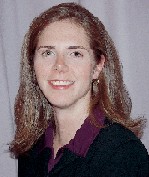The next time you encounter an optometry student, ask him or her, What characteristics make any given optometrist a leader or a role model?

If you asked todays students how they define a successful O.D., some might say that its someone with a commitment to furthering the profession in terms of scope of practice. Others would say its one whose focus extends beyond his practice to teaching colleagues how to treat diseases such as glaucoma or how to prescribe oral meds.
Now, suppose you asked that same question to students some 40 or 50 years ago. The responses would be very different and would more likely focus on traditional elements of the profession.
Optometry can and should be proud of the strides it has made. Certainly, todays graduates are fortunate to have so many opportunities. But, I wonder, how do these graduates carve a path through so many choices? More importantly, do they dismiss the more traditional path that the professions founders paved in exchange for the opportunity to blaze new roads?
As this months issue illustrates, two of optometrys primary roads are as important now as they were 40 years ago. They also are in need of repair.
Contact Lenses
Twenty-eight. Thats how many years in a row weve devoted an issue to focusing on contact lenses. Why would we need to cover this topic again so extensively? We have 2.7 million reasons. Thats the number of Americans who dropped out of contact lenses in 2002.
We hope that you will read this 28th Annual Contact Lens Report carefully and thoroughly because, while everything in it may not be new, contact lenses represent one of your professions primary arteries.
Im not sure when it happened, but at some point O.D.s stopped getting excited about contact lenses. There seems to be a sense that, unless a new product is introduced, we know all there is to know about contact lenses. The authors of this years report, however, propose that you may not. Our report argues that you could have retained many of those 2.7 million Americans who dropped out of contact lenses in 2002.
Helping People See
The othereven more basictraditional element of optometry that doesnt get the credit, or the press, that it deserves is charity. Optometry is about helping people to see and, thankfully, many of you and your colleagues are redefining success in this area. In this special feature, Senior Editor John Murphy highlights the work of reader-nominated humanitarians. Some volunteer in faraway lands, others in their hometowns; all of them should be an example to todays young O.D.s.
In Readers Choice: Optometric Humanitarians, youll hear about the adventures of VOSH veterans V.E. Bud Falkenhain, O.D., and Harry I. Zeltzer, O.D., as well as Special Olympics O.D.s Paul Berman and Susan Danberg. Youll also hear about Valerie Colby, O.D., who moved to Honduras with her entire family. Finally, Karen F. Perry, O.D., reaches out to the needy in her own community. She provides free eye exams to children and organizes a charity ball.
Optometry needs help delivering care to millions in need. There is no monetary reimbursement for these services, but these O.D.s say what they get back is worth much more.
When you ask a 2004 optometry school graduate to name a role model, I hope they will list someone youll read about in this issue of Review. And, when you ask, What characteristics make an optometrist a leader or a role model? I hope at least one student will say, Its a doctor who can keep just about any patient in his contact lenses, or Its someone whose top priority is helping patients see.

